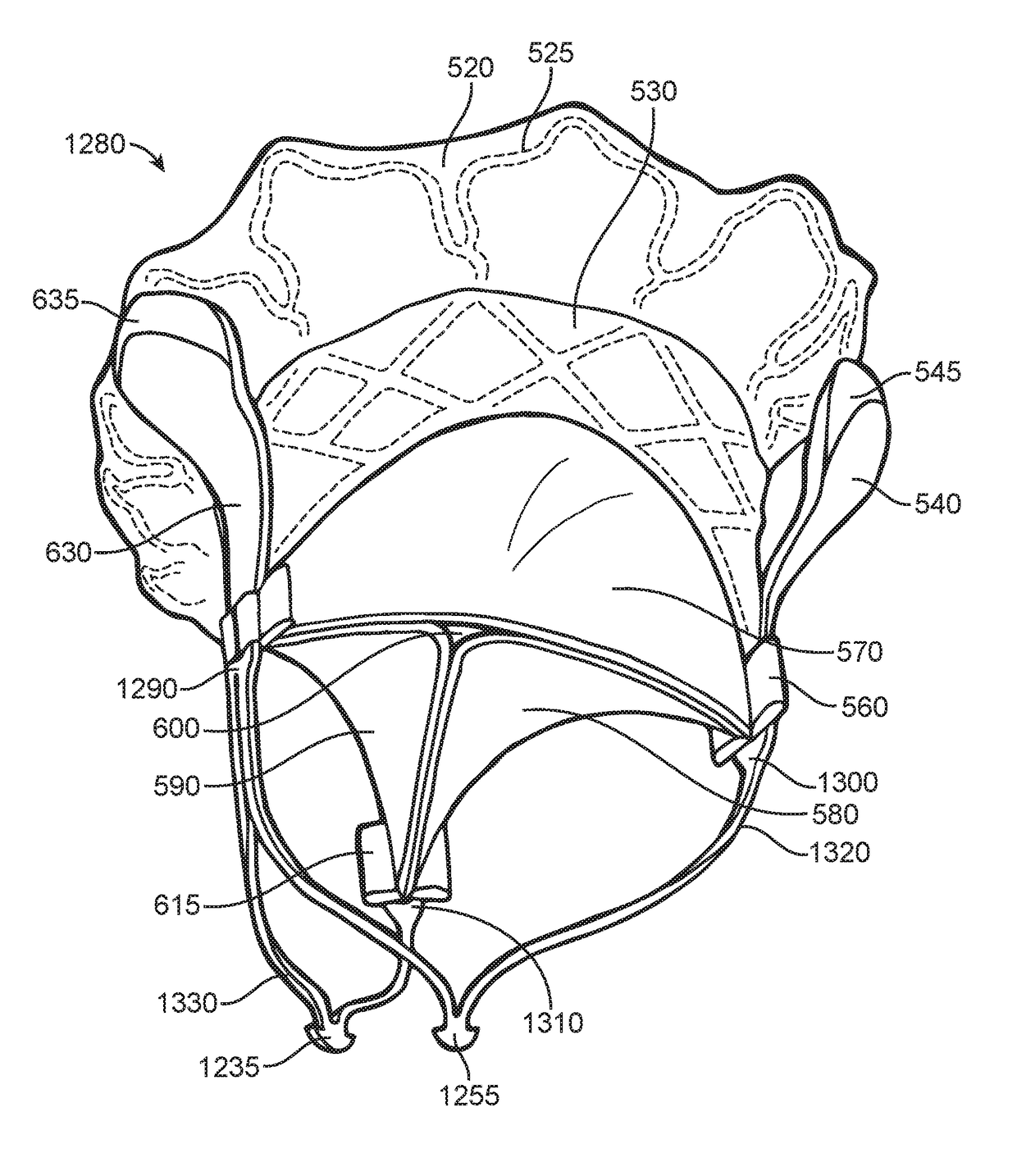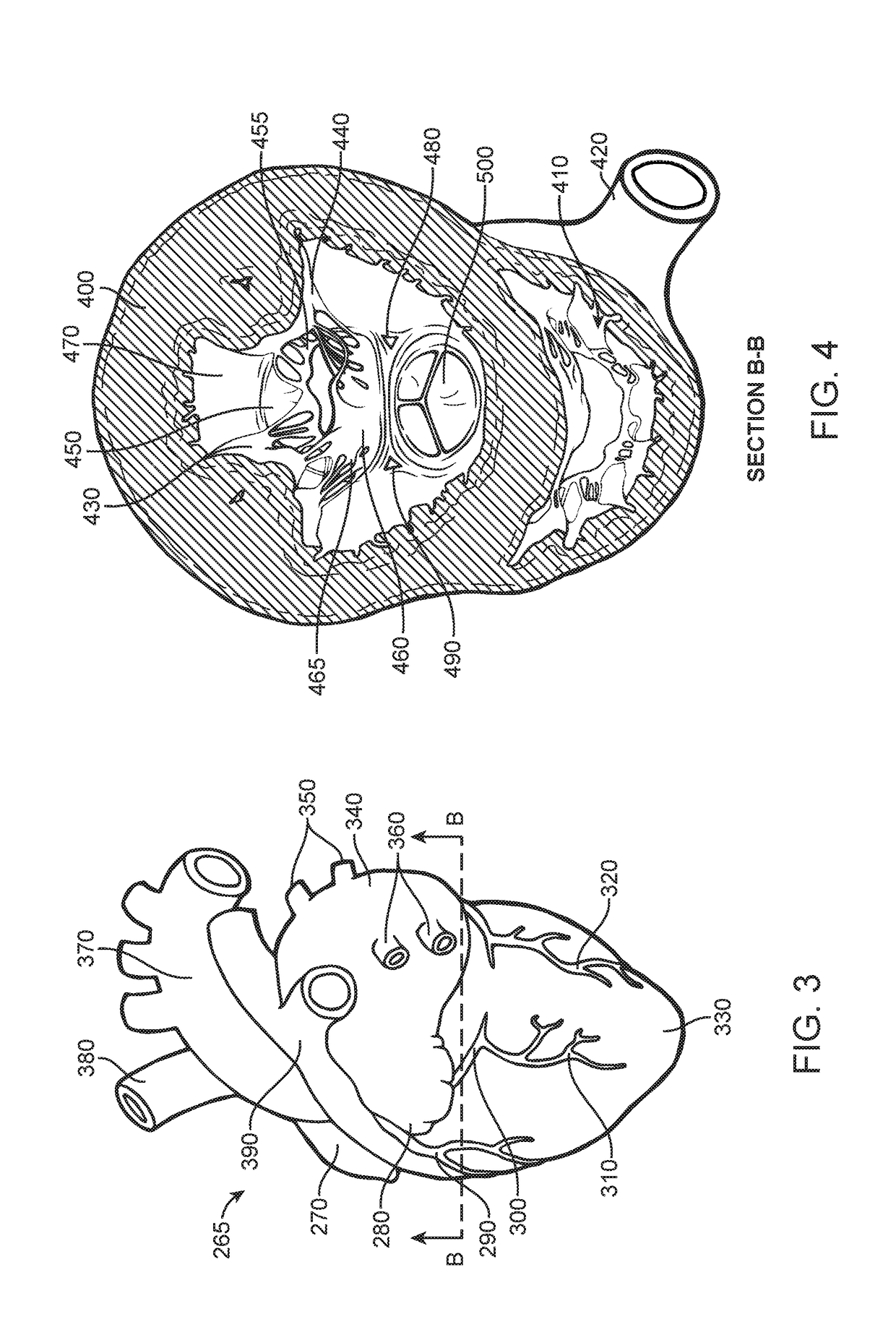Prosthetic valve for avoiding obstruction of outflow
a technology of prosthetic valves and valves, applied in the field of prosthetic valves for can solve the problems of congestive heart failure, open heart surgery, and abnormal leakage of blood retrograde from the left ventricle, and achieve the effect of avoiding obstruction of outflow
- Summary
- Abstract
- Description
- Claims
- Application Information
AI Technical Summary
Benefits of technology
Problems solved by technology
Method used
Image
Examples
embodiment 1730
[0157]FIG. 20B depicts an embodiment 1730 of a loaded delivery system with the atrial skirt revealed, showing the sheath catheter 1350 previously described in FIG. 20A translated a slight distance away from the dilator tip 1710. Specifically, the leading edge 1725 of the sheath catheter 1350 may be moved away from the edge 1720 of the dilator tip 1710, and may thereby reveal a partially constrained atrial skirt 1750.
embodiment 1760
[0158]FIG. 20C depicts an embodiment 1760 of a loaded delivery system with the anterior trigonal anchoring tabs revealed, showing the sheath catheter 1350 previously described in FIG. 20B translated away from the dilator tip 1710 to an even greater extent. Specifically, the leading edge 1725 of the sheath catheter 1350 may be moved further away from the edge 1720 of the dilator tip 1710, and may thereby reveal most of the structure of the encapsulated prosthetic mitral valve. An atrial skirt 1770 may now be approximately released, yet a still partially constrained annular region 1775 may remain constricted by the sheath catheter 1350. The configuration of FIG. 20C may remove a constraint that may allow the self-expansion of a portion of the prosthetic mitral valve. Adjacent to and directly beneath the constrained annular region 1775 may be a constrained anterior leaflet 1780, which may remain substantially compressed. Protruding from beneath the leading edge 1725 of the sheath cathe...
embodiment 1800
[0159]FIG. 20D depicts an embodiment 1800 of a loaded delivery system with the anterior trigonal anchoring tabs fully open, showing the sheath catheter 1350 previously described in FIG. 20C translated away from the dilator tip 1710 to an advanced extent. Specifically, the leading edge 1725 of the sheath catheter 1350 may be moved further away from the edge 1720 of the dilator tip 1710, and may thereby reveal all of the structure of the encapsulated prosthetic mitral valve, except for the commissure attachment (not shown). The atrial skirt 1770 may now be completely unconstrained, as may an annular region 1810. Adjacent to and directly beneath annular region 1810 may be a partially constrained anterior leaflet 1825, which may be almost completely released. The anterior leaflet 1825 may be operational and able to coapt against any other leaflets present in this embodiment (not shown). The plurality of trigonal anchoring tabs (antero-lateral trigonal anchoring tab 790 and associated fr...
PUM
 Login to View More
Login to View More Abstract
Description
Claims
Application Information
 Login to View More
Login to View More - R&D
- Intellectual Property
- Life Sciences
- Materials
- Tech Scout
- Unparalleled Data Quality
- Higher Quality Content
- 60% Fewer Hallucinations
Browse by: Latest US Patents, China's latest patents, Technical Efficacy Thesaurus, Application Domain, Technology Topic, Popular Technical Reports.
© 2025 PatSnap. All rights reserved.Legal|Privacy policy|Modern Slavery Act Transparency Statement|Sitemap|About US| Contact US: help@patsnap.com



